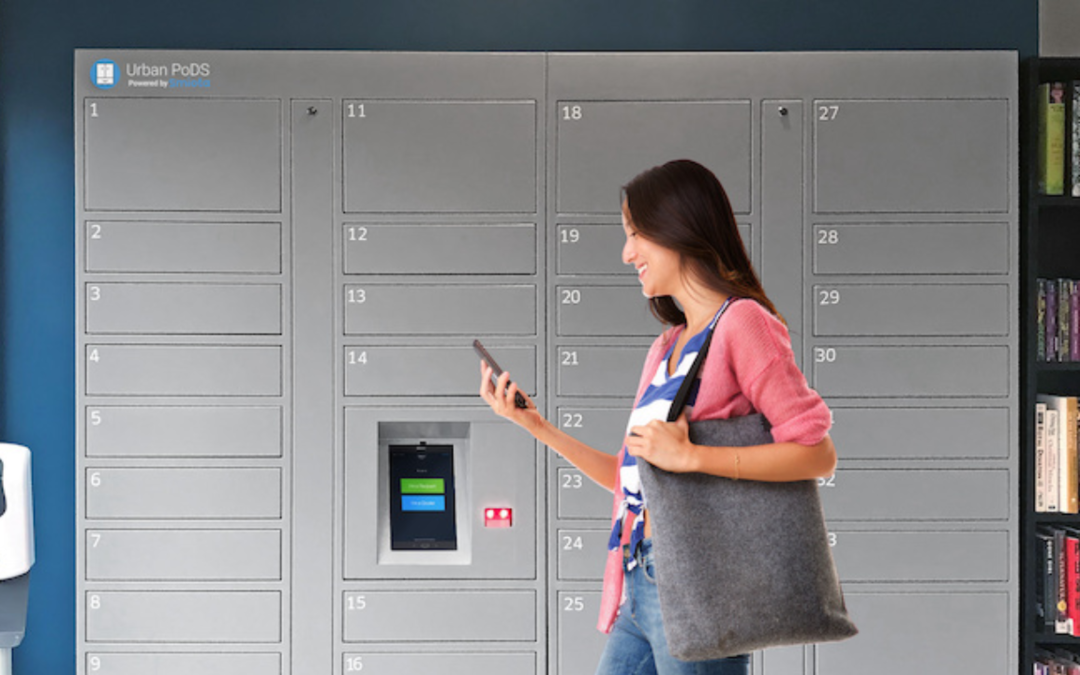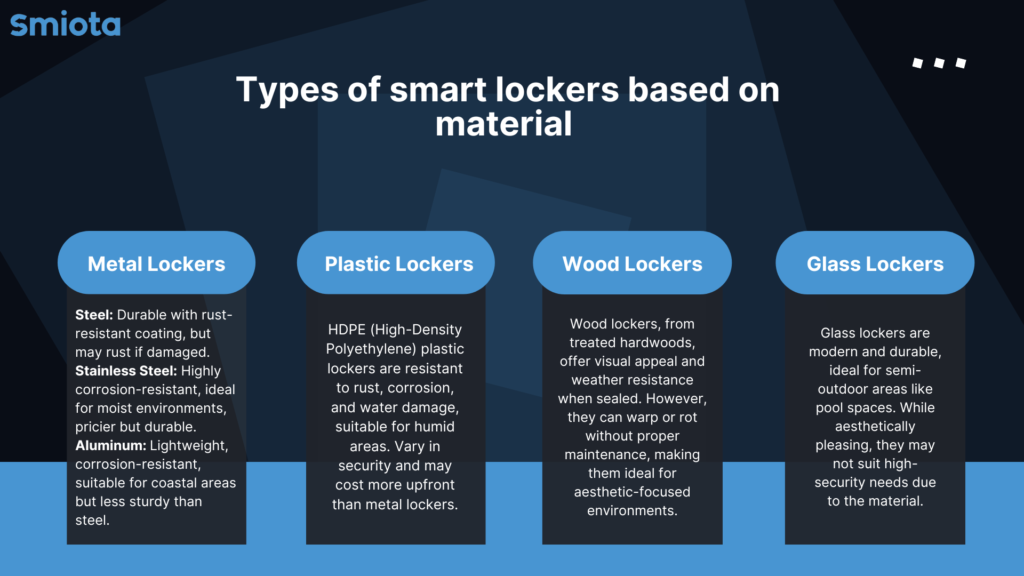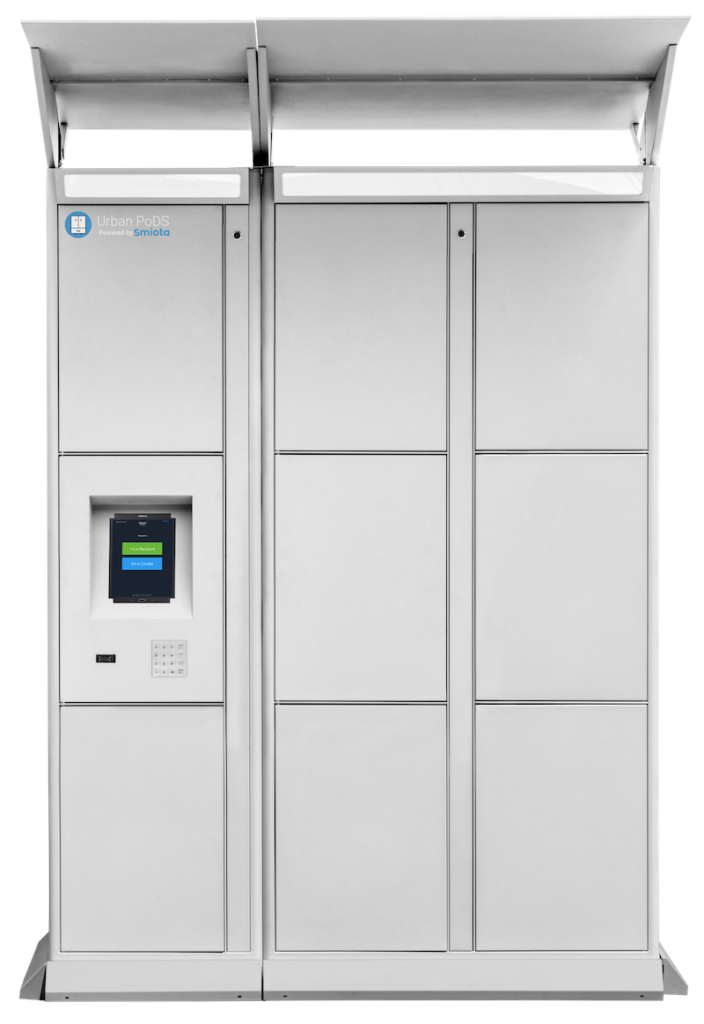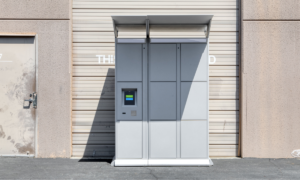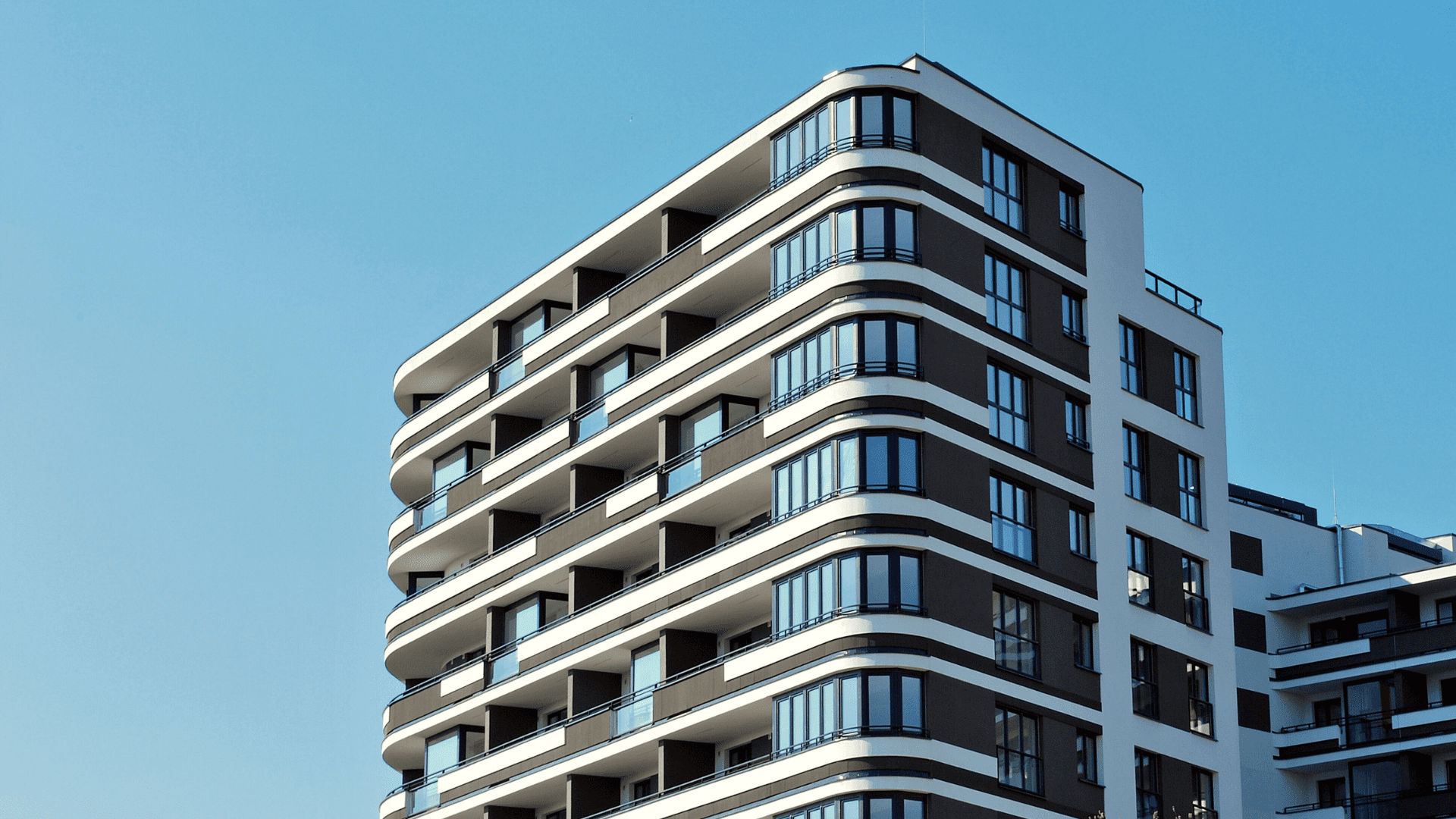Outdoor lockers are secure storage solutions designed to withstand adverse external conditions, providing a safe and accessible space for equipment, personal items, and more. They are used in multiple sectors, such as education (as student lockers), recreation (for secure storage at parks and pools), logistics (for parcel delivery), and industry (to store tools and protective gear).
However, the durability and effectiveness of outdoor lockers are influenced by their ability to resist weather conditions, proving that weather-proof lockers are essential to ensure their longevity. The solution lies in selecting materials and designs to withstand weather conditions such as sun, rain, wind, and even salt in coastal regions. Factors like material durability, waterproofing, UV protection, and additional features must be carefully considered to prevent rust, corrosion, and structural damage over time. This blog post will discuss several crucial aspects of picking durable, weather-resistant outdoor lockers for reliable, long-lasting storage solutions.
Battling the Weather Elements: The Struggle of Outdoor Storage Units
Weather can be the enemy of outdoor lockers. And understanding the impact of different weather conditions is essential.
Sun and Heat
Extended exposure to direct sunlight and high temperatures severely impacts outdoor lockers, particularly those made from materials like plastic or low-quality metals. UV radiation can cause fading, discoloration, and break down plastic materials, leading to brittleness and cracks. Metals, however, can heat up to uncomfortable levels and, if not properly treated, may corrode or weaken over time.
Rain and Humidity
Constant exposure to rain can lead to rust on metal components, swelling and warping in wood, and the growth of mold and mildew on and inside the lockers. Humidity, even without direct rainfall, can exacerbate these issues, particularly for materials that absorb moisture.
Cold and Snow
In colder climates, outdoor lockers face freezing temperatures and snow accumulation. Plastic becomes brittle and will crack in cold weather, and metal lockers can have their locks freezing and becoming inoperable. Snow and ice can seep into crevices, freezing and expanding, which may cause structural damage over time.
Wind
Strong winds can test the structural integrity of outdoor lockers, especially if they are not securely anchored. Doors and hinges are particularly vulnerable, as high winds can cause them to warp or become misaligned, affecting functionality.
Choosing lockers that can endure climate challenges—like UV damage, moisture, extreme temperatures, and wind—ensures they stay functional, secure, and visually appealing. Consider these environmental aspects when picking durable and reliable lockers for your needs.
How to Choose the Right Material for an Outdoor Locker
When selecting an outdoor locker, the material is paramount to its durability, security, and weather resistance. Various materials offer different benefits and drawbacks, and an insight into these can help you make an informed decision. We will also see a few factors beyond the material that play significant roles in a locker’s lifespan. Here are the common materials used for outdoor lockers:
Metal Lockers (Steel, Stainless Steel, and Aluminum)
- Steel: Durable with a rust-resistant powder coating but can rust if the coating is damaged.
- Stainless Steel: Highly resistant to corrosion, ideal for moist environments, pricier but durable.
- Aluminum: Light, corrosion-resistant, suitable for coastal areas but not as strong as steel.
Plastic Lockers (High-Density Polyethylene – HDPE)
Plastic lockers made from HDPE are highly resistant to rust, corrosion, and water damage, making them perfect for humid environments. Although low maintenance, they may offer a different level of security than metal lockers and can have a higher upfront cost.
Wood Lockers
Wood lockers, often made from treated hardwoods, can offer a visually appealing option with natural weather resistance if properly sealed and maintained. They are susceptible to warping, rot, and insect damage if not adequately treated or due to extreme conditions. Wood lockers are more suited for environments where aesthetics is a priority over extreme durability.
Glass Lockers
Glass lockers add a modern and sophisticated look to any setting. Made from tempered or laminated glass, they are surprisingly durable and resistant to weather effects when properly installed. While not as common for outdoor use, they can be ideal in covered or semi-outdoor spaces like pool areas, where moisture resistance is important but direct exposure to harsh weather is limited. Glass lockers may suit their aesthetics and functionality. Still, due to the material’s nature, they may not be suitable for high-security needs.
Factors beyond the material
- Look for lockers with robust construction methods, such as welded joints in metal lockers or reinforced doors, to ensure durability and security.
- Proper ventilation can help prevent moisture buildup inside the locker, which will otherwise lead to rust, mold, or mildew. Look for designs that allow air circulation while protecting contents from the elements.
- Consider the maintenance each material requires to maintain its condition over time. For instance, metal may need occasional repainting, and wood might require resealing or treating.
- Assess the specific environmental challenges in your area. Coastal locations may need materials resistant to salt spray, while urban areas prioritize anti-graffiti finishes.
Choosing the right material for an outdoor locker depends on balancing the need for durability, security, maintenance, and aesthetic preferences against its specific environmental conditions. Outdoor lockers from Smiota address the various challenges of weather conditions and may be the answer to a durable and secure solution for your needs.
Smiota’s Outdoor Lockers
Smiota’s outdoor lockers are designed to accommodate various needs and environments. Here’s an overview of their features and customizable options:
- Customization options: You can choose locker colors and wraps to match your brand.
- Material and design: Constructed with galvanized steel, UL-certified components, and a powder-coated, anti-graffiti finish.
- Technology and security: Features include auto-opening locker doors with an 88-pound capacity, lock and package sensors, and a control center with an outdoor-rated tablet, barcode and QR code scanner, and connectivity options.
- Environmental protection: The lockers have an external rain shelter roof with smart lighting and water drain gutters and can operate in a wide temperature range.
- Configurations: Options include central console units, add-on units, temperature-controlled units (refrigerated, freezer, heated, ambient), oversized, and mail units.
These lockers are engineered for extreme weather resistance, offering numerous benefits.
Advantages of Smiota’s Weather-proof Lockers
- Outdoor Durability: They are built with heavy-gauge steel to withstand extreme weather conditions, safeguarding contents and extending their life.
- Weather-Proofed: Enhanced features ensure these lockers resist harsh conditions, remaining operational and secure outdoors.
- Space-Saving Design: Optimized for areas with limited space, they offer a secure storage solution without sacrificing space.
- 24/7 Package Access: Users enjoy round-the-clock access to deliveries for convenience anytime.
- Contactless Retrieval: Supports no-contact pickup, aligning with health guidelines to minimize risk and indoor crowding.
- Complete Locker Solution: Smiota provides a full suite of services, including robust hardware, cloud software, constant support, software updates, and analytics for effective locker management and usage tracking.
- Security with Convenience: These lockers combine enhanced security with user-friendly features, ensuring secure, easy-to-maintain storage and delivery solutions.
Exploring Weather-proof Outdoor Locker Use Cases
Public Parks and Recreational Areas
Weather-proof outdoor lockers are an essential amenity in public parks and recreational areas. They offer visitors a secure place to store their belongings while they enjoy activities such as hiking, biking, or picnicking. These lockers provide peace of mind, knowing that personal items like wallets, keys, and electronic devices are safe from theft or environmental damage.
Beaches and Pool Sides
Outdoor lockers are a game-changer for beachgoers and swimmers. They allow individuals to store their valuables securely while they take a dip in the ocean or a pool, eliminating the worry of leaving items unattended on the beach or poolside. This convenience significantly enhances the visitor experience, making for a worry-free day out in the sun.
Libraries
Libraries have also started adopting outdoor locker systems to facilitate the after-hours pickup and drop-off of books and other materials. This system extends library services beyond traditional hours, providing greater flexibility and accessibility to patrons. These lockers also serve community-sharing projects, holding items ranging from garden seeds to DIY tools and children’s educational kits. Weatherproofing is essential to protect the diverse contents, making this an innovative way to enhance library services and community engagement.
Smiota has already been working with multiple libraries in the US to offer a seamless pick-up and drop experience to their patrons. For instance, check out the below video to learn how the library at Evergreen State College is using Smiota’s outdoor lockers for an enhanced student experience.
Related: Benefits of Installing Automated Parcel Lockers in your University Campus
Rental Lockers for Day Use
For individuals engaging in day-long activities such as hiking and travel, rental lockers provide a convenient solution for storing personal items or outdoor gear. This use case is particularly appealing for adventurers wanting to carry only some of their belongings throughout the day, offering a secure and flexible option to lighten their load.
Transit Stations and Tourist Spots
In areas with high foot traffic, such as transit stations and popular tourist destinations, outdoor lockers offer a temporary storage solution for travelers and day-trippers. These lockers are especially beneficial for tourists who may have checked out of their accommodations and need a place to store their luggage for a few hours before a late flight or train departure.
These use cases underscore the adaptability of outdoor lockers to various needs, emphasizing their role in making daily activities and memorable adventures more convenient and secure.
Conclusion
Choosing the right weather-proof outdoor locker ensures its longevity and durability. By focusing on materials resistant to rust, corrosion, and UV damage, such as stainless steel or UV-stabilized plastics, you can safeguard your investments against the harsh outdoor environment. Additionally, considering lockers with proper ventilation systems can prevent moisture buildup, further protecting your belongings from damage. Locker selection, with a preference for weather-resistant mechanisms, will also play a significant role in its overall resilience. By considering the advantages and disadvantages of each material type and the chosen location, you can select an outdoor locker that meets your needs and withstands the test of time.

